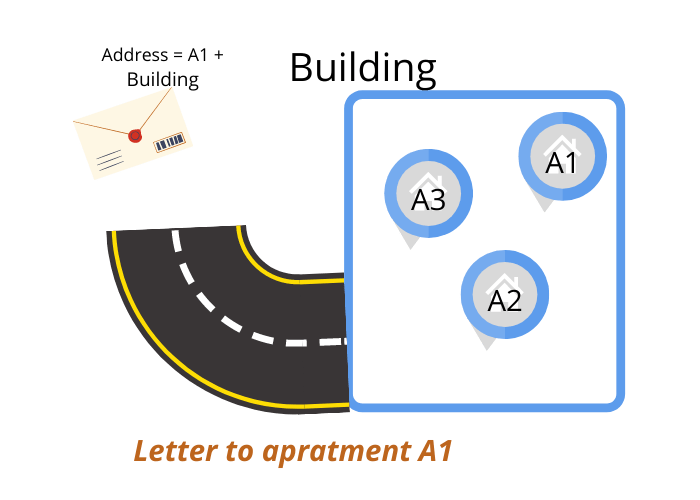
FTP Server Secure
A secure FTP server uses a combination protocols to provide authentication or encryption, data integrity, password management, and access control mechanisms. It is considered a high-end solution for organizations and enterprises that need to share sensitive information securely.
FTP vulnerabilities and mitigation
In a network of today, data can easily be intercepted by using techniques like packet sniffing. Cybercriminals who read network packets can obtain the usernames & passwords of people downloading files via a file-transfer server.
Create a firewall to limit the access to your ftp website by certain IP addresses. Also, automatically blacklist all incoming requests that come from suspect traffic sources. This can be used to help prevent the introduction of Denial of Service (DoS) attacks.
To keep your information secure from hackers, all ftp connections between servers should use encrypted connections. You can achieve this by enabling SSL or TLS on your ftp website, or by configuring FTPS to require explicit encryption.

Encryption is a critical component of FTP security. It is vital to protect sensitive information in your company from theft, loss, or misuse. This is particularly true for networks adhering to federal compliance standards like PCI DSS or HIPAA.
The encryption should use the Advanced Encryption Standard(AES) or SHA-2 algorithms. AES is more reliable than Blowfish & DES, whereas SHA-2 is better compared to the older SHA-1 algos.
A second way to secure your ftp website is to make sure that all files are encoded before they leave the DMZ. This will prevent hackers using an exploit in order to hack into your system and steal information.
The encrypted file must also be deleted when it no longer needs to exist on the server. It is possible to achieve this by setting file access permissions, which only allow authenticated users the ability to read or write data within a specific folder or directory.
This is an excellent way to keep your ftp site protected from malicious users and can be easily implemented by using the FTP security settings in IIS.

In the ftp site's settings, select Require SSL and enter a certificate name in the SSL Certificate drop-down box. Choose a valid certificate compatible with the operating system you are using.
If you want to have a secure ftp, then enable SSL for both the ftp channel control and data. This can be done by enabling the FTPS protocol with SSL on port 990 or by configuring the FTPS protocol using explicit FTPS on port 21.
You have a variety of options to secure your site. However, the most effective is to encrypt any files you transfer, set the file permissions to only allow those who are authorized to upload and download.
Using the above steps will significantly improve the security of your ftp site and can protect your company from a variety of attacks. In addition, using a strong password to protect your ftp will make it more secure.
FAQ
Can I use a Template or Framework on My Website?
Yes! A lot of people use prebuilt templates or frameworks to create websites. These templates contain all the code needed to display information on your page.
Some of the most popular templates include:
WordPress - The most popular CMS
Joomla - another popular open source CMS
Drupal – An enterprise-level solution used by large organizations
Expression Engine is a Yahoo CMS that allows you to create custom CMS sites.
Hundreds of templates are available for each platform, so finding the right one should be easy.
Can I build my website using HTML & CSS?
Yes! If you've been following along so far, you should now understand how to start creating a website.
You're now familiar with the basics of creating a website structure. However, you must also learn HTML and CSS Coding.
HTML stands as HyperText Markup Language. You can think of it as writing a recipe. It would list the ingredients, directions, and how to do it. HTML can also be used to inform a computer if certain parts of text should appear bold, underlined and italicized. It's the language for documents.
CSS stands for Cascading Style sheets. Think of it like a style sheet for recipes. Instead of listing each ingredient and instructing, you can write down general guidelines for font sizes, colors and spacing.
HTML tells the browser what HTML is and CSS tells it how.
You don't have to be a prodigy if you don’t get the terms. Follow these tutorials to create beautiful websites.
Can I build my website using HTML & CSS?
Yes, you can! You'll need to be familiar with web design concepts and programming languages such HTML (Hyper Text Markup Language), CSS, and CascadingStyle Sheets. These languages enable you to create websites that are accessible to anyone with an internet connection.
What is a static web site?
A static website contains all content stored on a server that visitors can access via web browsers.
The term "static” refers the fact that there is no dynamic feature such as changing images or video, animations etc.
This site was originally designed for intranets. However, it has been adopted by small businesses and individuals who need simple websites with no custom programming.
Because they are less maintenance-intensive, static sites have gained popularity. They are much easier to maintain than fully-featured sites with many components (such a blog).
They load also faster than their dynamic counterparts. This makes them perfect for users who are using mobile devices or have slow Internet access.
Also, static websites are more secure that dynamic counterparts. You can't hack into a static site. Hackers have only access to data stored in a database.
There are two main options for creating a static website.
-
Using a Content Management System.
-
How to create a static HTML website
It depends on what your needs are. If you're new to creating websites, I recommend using a CMS.
Why? Because it gives you complete control of your website. You don't even need to hire someone for help setting up your CMS. Upload files to the website server.
You can still learn code and create static sites. But you'll need to invest some time learning how to program.
What is the cost of building a website?
It depends on what your website is used for. Google Sites may not be required if you simply want to provide information about yourself or your company.
However, if visitors are serious about coming to your site, they will be willing to pay more.
A Content Management System (like WordPress) is the best solution. These programs allow you to create a website without knowing anything about programming. And because third-party companies host these sites, you won't need to worry about getting hacked.
Squarespace offers a great way to build your website. They offer a variety of plans ranging from $5 per month to $100 per month, depending on what you want to include on your site.
Statistics
- Did you know videos can boost organic search traffic to your website by 157%? (wix.com)
- When choosing your website color scheme, a general rule is to limit yourself to three shades: one primary color (60% of the mix), one secondary color (30%), and one accent color (10%). (wix.com)
- In fact, according to Color Matters, a signature color can boost brand recognition by 80%. There's a lot of psychology behind people's perception of color, so it's important to understand how it's used with your industry. (websitebuilderexpert.com)
- It's estimated that chatbots could reduce this by 30%. Gone are the days when chatbots were mere gimmicks – now, they're becoming ever more essential to customer-facing services. (websitebuilderexpert.com)
- Studies show that 77% of satisfied customers will recommend your business or service to a friend after having a positive experience. (wix.com)
External Links
How To
What is website hosting?
Website hosting is the place where visitors go to visit a website. There are two types:
-
Shared Hosting - This is your cheapest option. Your website files are stored on a server that is owned by another person. Your customers' requests travel via the Internet to your server when they visit your site. The request is then handed to the owner of that server.
-
Dedicated hosting - This is the most expensive option. Your website will reside on a single server. There are no other websites sharing space on the server. Your traffic remains private.
Shared hosting is cheaper than dedicated hosting for most businesses. You can use shared hosting if the company owns the server to provide the resources required for your website.
Each option has its pros and cons. Here are the differences:
The pros of shared hosting:
-
Lower Cost
-
Simple to Setup
-
Regular Updates
-
It can be found on many web hosting companies
Hosting shared with others can cost as low as $10/month. This price often includes bandwidth. Bandwidth is the data transfer speed that you have over the Internet. So even if you only upload photos to your blog, you may still pay extra money for high amounts of data transferred through your account.
You'll soon discover why you paid so much more for your previous host when you get started. The majority of shared hosts offer limited customer support. While they may occasionally assist you in setting up your site and other tasks, after that you are all on your own.
It is important to find a provider that provides 24-hour support. They will attend to any issues you have while you sleep.
Cons of dedicated hosting
-
More Expensive
-
Less common
-
Specific Skills Required
With dedicated hosting, everything you need for your website is at your fingertips. You won't worry about how much bandwidth you are using or how much RAM (random Access Memory) you have.
This means that you'll spend a bit more upfront. You'll soon realize that your business is self-sufficient once it's online. You'll quickly become an expert at managing your server.
So Which Is Better For My Business?
The answer will depend on the type and purpose of your website. Shared hosting might be best if you just want to sell products. It is simple to set up and easy to maintain. And since you're sharing a server with many other sites, you'll likely receive frequent updates.
However, dedicated hosting can be a great option if you're looking to build a community around the brand. You can put your efforts into building your brand, and not worry about how to handle your traffic.
If you're looking for a web host that offers both options, we recommend Bluehost.com. Bluehost.com offers unlimited monthly data transfers, 24/7 customer support, domain registrations free of charge, and a 30-day guarantee for your money back.